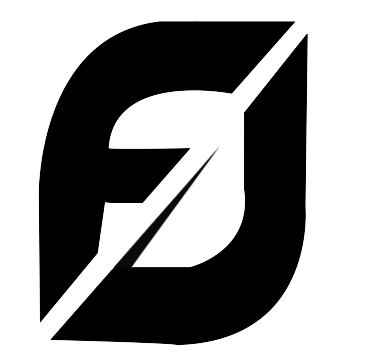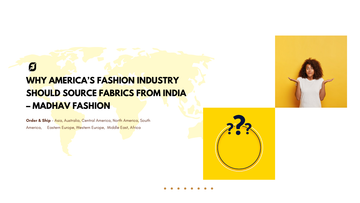Why America’s Fashion Industry Should Source Fabrics from India
Fashion is one of the most globalized industries in the world. An American designer in New York may sketch a garment, but the cotton could be grown in India, the weaving done in Vietnam, and the stitching finalized in Bangladesh before the final product appears on shelves in Los Angeles. For decades, cost arbitrage drove this system. Brands chased the cheapest labor, the fastest output, and the largest scale.
Intricate threads & premium texture Printed Fabric
Creative, colorful & always trending Position Printed Fabric
Perfect alignment for standout looks Jacquard Fabric
Rich textures with woven luxury Plain Dyeable (RFD)
Customize colors, your way Pure Dyed Fabrics
Ready-to-stitch brilliance Designer Dupattas
From shimmer to sheer elegance Ready Stocks
Quick ship fabrics in bulk Kurti Fabrics
Comfort meets tradition New Arrivals
Fresh drops, every week
But 2020 changed everything. The pandemic disrupted supply chains and exposed vulnerabilities. Container shortages, delayed shipping, and rising raw material costs reshaped how brands think about sourcing. The new priority is not just cost, but resilience, quality, and trust. In surveys conducted by McKinsey & Business of Fashion (BoF) in 2023, more than 70% of executives cited “supplier reliability” and “authentic craftsmanship” as equal or greater factors than price alone.
This is the moment where India—and companies like Madhav Fashion—step forward.
India: The Fabric of a Civilization
Unlike other textile hubs that rose in the last 50 years, India’s textile legacy spans thousands of years. The world once knew India as the land of muslin, silk, and cotton. Even before industrialization, Indian weavers were exporting fabrics to Europe, the Middle East, and Africa.
But beyond history lies something deeper: an ethical worldview. In Sanskrit, there is a saying: “Vasudhaiva Kutumbakam”—“The world is one family.” This philosophy often guides how Indian companies approach business. It is not just about transactions; it is about relationships. In fabric making, this translates into an emphasis on care, customization, and quality that customers can feel.
For American consumers, this is crucial. A shirt is no longer just a shirt; it is a statement of values. Was it made ethically? Does it carry a story? Can I trust its quality? When those questions arise, Indian fabrics have a powerful answer.
Why America Needs India’s Fabrics
The U.S. fashion industry stands at a crossroads. On one hand, fast fashion giants dominate with ultra-cheap products; on the other, consumers increasingly demand sustainability and authenticity. The middle ground—affordable, premium-quality, emotionally resonant fabrics—is where India shines.
-
Sustainability: India is investing heavily in organic cotton, natural dyeing techniques, and water-conscious textile processing.
-
Flexibility: Unlike mega-factories in China that demand massive orders, Indian suppliers like Madhav Fashion can cater to both large luxury houses and smaller American boutique designers.
-
Heritage + Innovation: American designers crave uniqueness. Indian embroidery, digital prints, and dyeable fabrics allow for creativity without sacrificing scale.
-
Trust & Reliability: With two decades of export partnerships, Indian companies have proven they deliver not just fabric, but consistency.
For American brands navigating inflation, shifting consumer demands, and competitive pressure, this balance is invaluable.
Madhav Fashion: A Case Study in India’s New Textile Power
Consider Madhav Fashion, headquartered in Surat, Gujarat—a city long regarded as the textile capital of India. For over 20 years, Madhav has supplied fabrics to global brands, designers, and garment manufacturers. The scale is impressive: millions of dollars in export orders annually, covering markets from Europe to the Middle East and, increasingly, the United States.
What sets Madhav apart is its range and responsiveness. The company specializes in:
-
Premium Embroidery Fabrics – a staple for luxury gowns, bridal wear, and high-fashion collections.
-
Digital Printed Fabrics – vibrant, modern, and aligned with Western fashion trends.
-
Pure Plain Dyeable (RFD) Fabrics – offering flexibility for American brands who want to customize colors in-house.
-
Poly-based and Mixed Fabrics – balancing affordability with premium feel, especially relevant for mid-market U.S. brands.
To bring this portfolio closer to American buyers, Madhav launched FabricDiary.com—a wholesale ecommerce platform where designers, manufacturers, and even small businesses can source directly online. The model is simple: the more you buy, the more competitive the price. For a market like the U.S., where time is money and digital adoption is high, this accessibility is a game-changer.
One U.S. boutique owner recently described their experience:
“We discovered FabricDiary.com when searching for affordable but high-quality printed fabrics. What impressed us wasn’t just the product, but the speed, professionalism, and willingness to customize. For a small American label, that support is priceless.”
This is the new India—deeply traditional in craft, but boldly modern in business.
Competing with China: Quality vs. Quantity
No discussion of global textiles is complete without China. The country has long dominated fabric exports, thanks to its sheer scale and low-cost efficiency. Yet, the cracks are showing. Rising labor costs, geopolitical tensions, and an emphasis on speed over quality have created dissatisfaction among global buyers.
China can produce millions of yards of polyester quickly—but can it deliver fabrics that carry a story, a sense of heritage, or emotional resonance? That is where India wins.
Madhav Fashion embodies this difference. While Chinese competitors often prioritize cost-cutting, Madhav invests in design innovation, ethical sourcing, and customer relationships. As the CEO of a U.S. apparel startup shared:
“With China, we often felt like just another number. With Madhav, we felt like a partner.”
That distinction—relationship over transaction—is invaluable in today’s uncertain world.
America’s Shift Toward Ethical Sourcing
The American consumer is changing fast. According to a 2024 PwC survey, 73% of U.S. buyers say they are willing to pay more for sustainable and ethically sourced products. Gen Z and millennials, in particular, want brands that align with their values. This generational shift is reshaping supply chains.
Retail giants are taking note. Nordstrom has expanded its “Sustainable Style” section. Patagonia continues to champion ethical sourcing as a brand identity. Even fast fashion leaders like H&M are experimenting with “conscious collections.”
For smaller American designers and entrepreneurs, the message is clear: sourcing matters. Working with Indian suppliers like Madhav Fashion allows them to market not just clothing, but a story of authenticity.
A Glimpse Into the Future: Technology + Tradition
Textiles are not immune to disruption. Artificial Intelligence (AI) is entering the industry, from predictive trend analysis to digital fabric simulations. Indian companies are already adapting. Madhav Fashion, for instance, has invested in digital fabric printing technologies, ensuring faster turnaround and reduced waste.
Imagine a future where an American designer in Brooklyn uses AI to create a pattern, uploads it to FabricDiary.com, and within days, receives custom-printed fabric shipped from India—at wholesale rates. That future is already here.
By blending heritage craftsmanship with digital efficiency, India is positioning itself as the supplier of choice for America’s next generation of fashion entrepreneurs.
Why American Countries Must Choose India Now
In a world of uncertainty, supply chain disruptions, and shifting consumer demands, sourcing fabrics is no longer just a business decision—it’s a strategic one. American brands must ask: do we want to align with mass production, or do we want to build with quality, ethics, and trust?
India offers that choice. And Madhav Fashion represents its promise. With two decades of global trust, a wide range of fabrics, and a digital-first approach, it bridges the gap between tradition and innovation.
When the world thinks of fabric, it should not only think of price tags and efficiency. It should think of heritage, emotion, and the power to connect people across continents. That is the story of Indian textiles. That is why, for American countries, the fabric of the future must be sourced from India.
__________________________________
FAQ
Q1. Why should American fashion brands source fabrics from India?
American brands benefit from India’s blend of heritage, sustainability, and premium quality. Unlike mass producers, Indian suppliers like Madhav Fashion offer fabrics that combine ethics with innovation.
Q2. How is Madhav Fashion different from other fabric exporters?
Madhav Fashion has over 20 years of global experience, supplying embroidery, digital prints, dyeable fabrics, and poly blends. They also run FabricDiary.com for wholesale online buying.
Q3. Can small U.S. fashion startups buy fabrics from Madhav Fashion?
Yes. With FabricDiary.com, even small designers and boutique owners can purchase fabrics online at wholesale rates without needing massive orders.
Q4. Are Indian fabrics more sustainable than Chinese fabrics?
India is investing in organic cotton, eco-friendly dyeing, and digital printing to reduce waste. While China prioritizes mass production, India balances scale with sustainability and authenticity.
Q5. What types of fabrics are most popular in the U.S. market from India?
Embroidery fabrics, digital prints, plain dyeable (RFD) fabrics, and affordable poly/mixed fabrics are in high demand among American designers.<script
Enhancements & Experience URL has no enhancements






